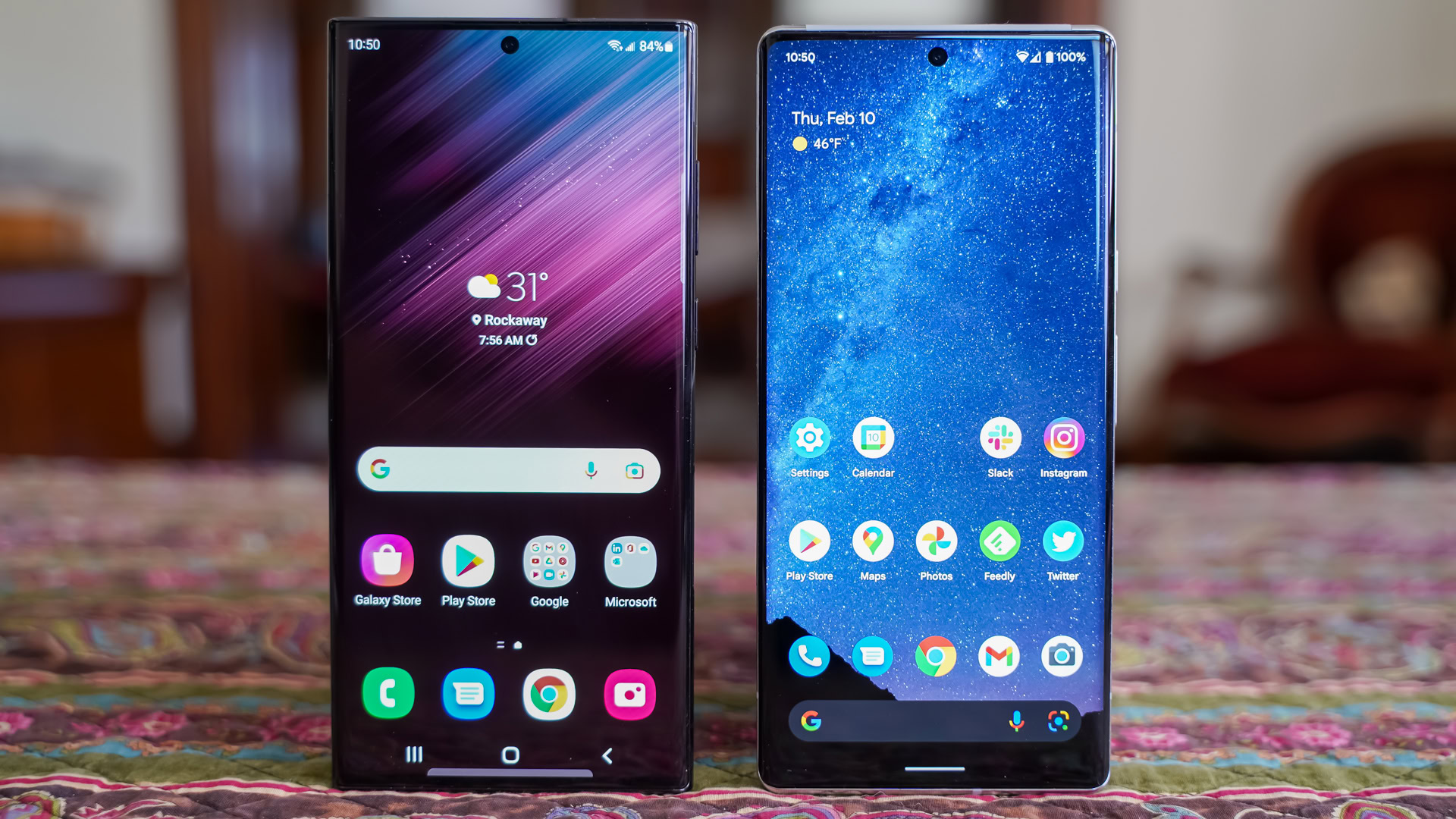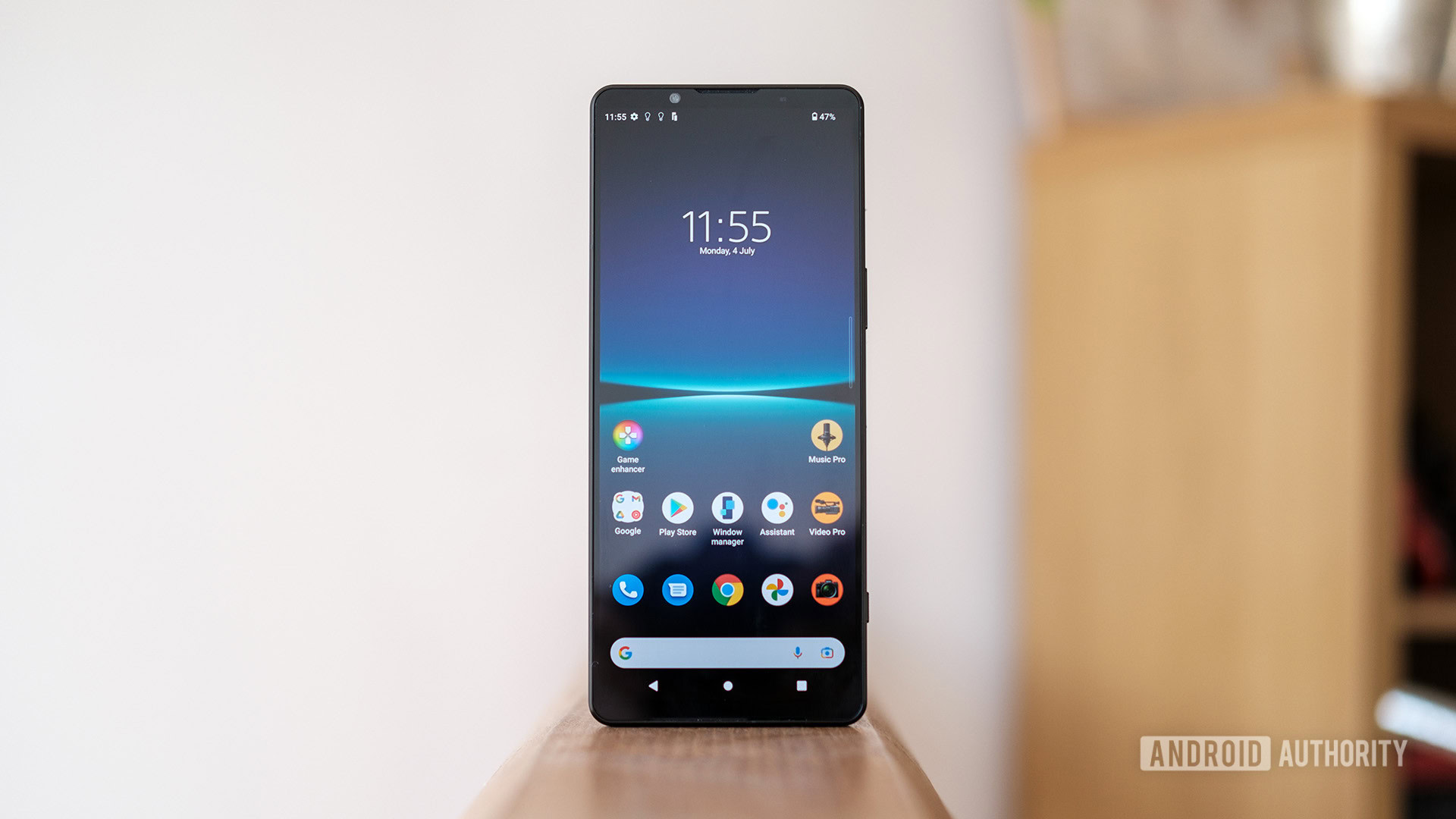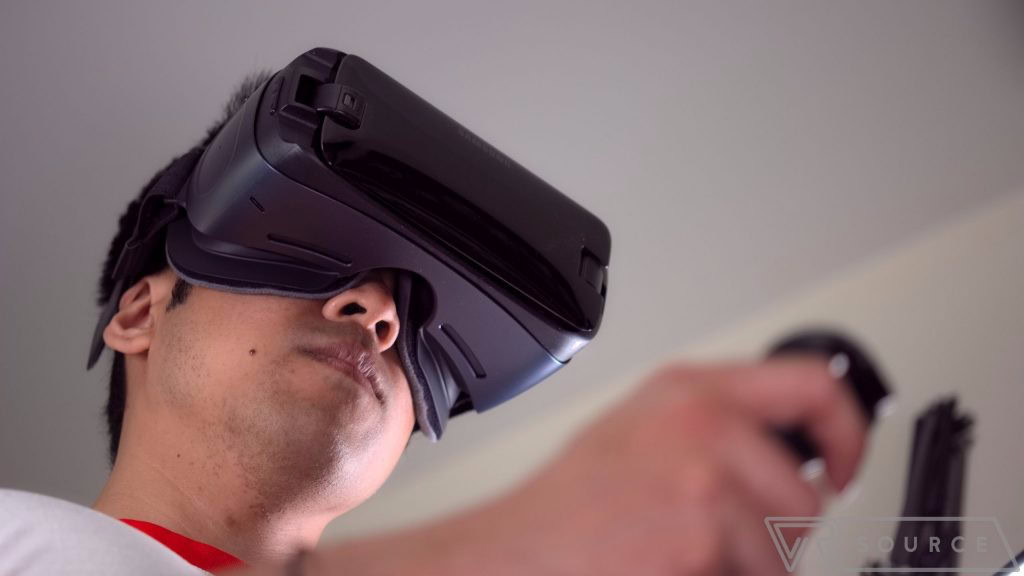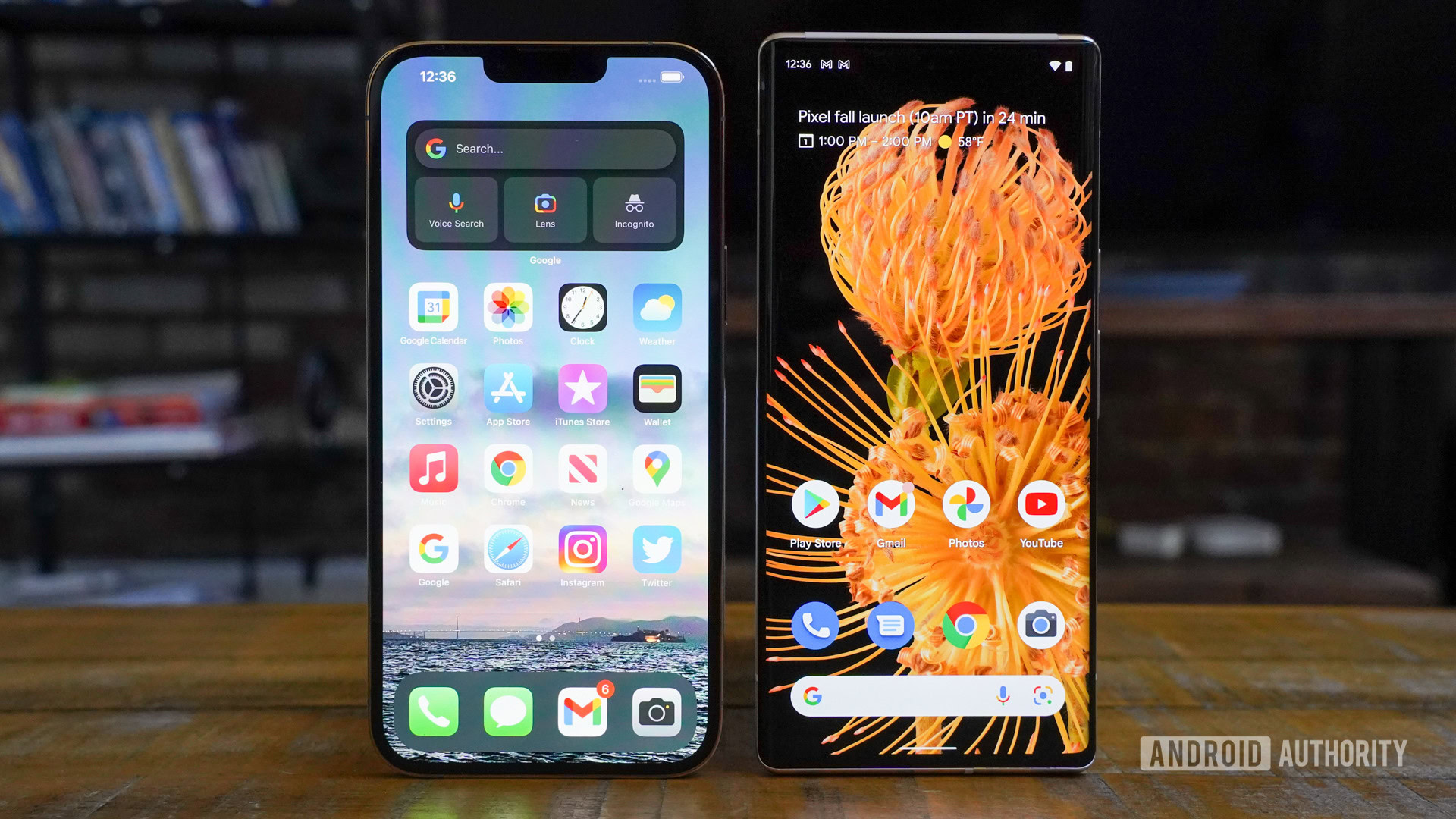Affiliate links on Android Authority may earn us a commission. Learn more.
The smartphone pixel density wars have ended and that's a good thing

For well over a decade, smartphone manufacturers marketed screen resolution and pixel density as the be-all and end-all of display quality. Even today, you’ll find a handful of flagship smartphones like the Sony Xperia 1 IV and Galaxy S22 Ultra tout their 4K and Quad HD (QHD) displays as key selling points. However, a lot has changed since QHD and 4K smartphone displays first debuted in 2015, a time when 5.5-inch screens were the norm.
The Samsung Galaxy S6 Edge, one of the first smartphones to feature a QHD display, had a pixel density of nearly 580 pixels per inch (PPI). This year’s Galaxy S22 Plus, however, doesn’t even top 400 PPI, due to its lower FHD-class resolution and a larger 6.6-inch display.
Indeed, Quad HD displays were the norm across all flagship-tier devices only a few short years ago. So why have smartphone manufacturers almost unanimously abandoned the chase for higher pixel densities?
Why don’t more smartphones have QHD and 4K displays?

One of the big reasons you’ll hear cited for the slow death of QHD and 4K-class smartphone displays is power consumption. This makes intuitive sense too — a higher resolution should theoretically require more power to drive those extra pixels. Indeed, our own testing once found that smartphones with QHD displays consumed roughly 20 percent more battery than those with FHD displays. That number might be different today, but a perceptible difference likely still exists.
High-resolution displays also require additional processing power, especially in graphically intensive tasks and games. Many modern flagship SoCs simply cannot deliver that level of performance for very long. This problem is compounded by the fact that many modern SoCs are designed to maximize performance, even if it comes at the expense of higher heat output and power draw. It’s also likely why we’ve seen many smartphones default to a lower rendering resolution (usually FHD) out of the box.
QHD displays not only draw more power, but also demand additional processing power.
Arguably, increasing a display’s refresh rate above 60Hz delivers a far more immediate impact on the end-user experience than higher pixel densities. The industry has even found a way to tame power consumption in this area through the use of LTPO displays, which can dynamically adjust the refresh rate.
Quad HD vs Full HD: What’s the minimum you should buy in 2022?
It’s also worth noting that smartphone-based VR headsets have all but disappeared of late. Virtual reality was once a big motivator for manufacturers and consumers to opt for high-resolution QHD and 4K displays. For evidence of this fact, we can look to the Galaxy S6 series once again, which was also the first to support the company’s own Gear VR headset.
Support for Gear VR eventually came to an end with the release of the Galaxy Note 10 in 2019 and the Galaxy S20 series in 2020. Roughly one year later, Samsung downgraded the resolution on the Galaxy S21 and S21 Plus to FHD, reserving QHD+ for the larger S21 Ultra.

While it’s impossible to know for sure, it’s likely that diminishing interest in smartphone-based VR contributed to the demise of higher pixel densities. At more reasonable viewing distances like 30 to 40cm, most users would be hard pressed to tell the difference between FHD and QHD smartphone displays.
At normal viewing distances, the difference between FHD and QHD is subtle at best.
Finally, the vast majority of content consumed on smartphones these days has yet to break the FHD barrier. Only a handful of premium streaming services support intermediate resolutions like QHD, with most either defaulting to either FHD or 4K. And even then, limited bandwidth often restricts users to lower resolutions.
Beyond pixel density: What makes a good smartphone display?

Regardless of why the industry has given up on pushing pixel densities year-over-year, the situation can be regarded as a win-win. Chasing a higher resolution every generation was always an arbitrary goal with diminishing returns. With that out of the way, display manufacturers can now focus on other, more important areas. With the advent of HDR content and high refresh rates, display quality has become more important than ever before.
Early Android smartphones featured LCD panels with narrow viewing angles, limited color gamut, and low brightness. We’ve naturally come a long way since then. These days, even budget smartphones feature OLED screens with adequate brightness and passable color reproduction capabilities. However, that’s not to say that every smartphone display is created equal.
Panel quality, factory calibration, and software settings can all impact the resulting image quality. And that’s not even taking into account less obvious factors like power consumption and longevity.
You can't gauge a smartphone display’s real-world quality based on its spec sheet alone
While most smartphones feature wide color gamuts these days, many don’t represent these colors accurately enough within these gamuts. An improperly calibrated screen can suffer from an overwhelming bias toward cool or warm tones. This can make sunsets look as vibrant as a raging fire, for example. We’ve also encountered displays that couldn’t properly resolve dark portions of the image when playing back HDR content. This could be either due to the panel’s low contrast levels or incorrectly configured tone-mapping in software.
See also: What is HDR display technology and why does it matter?
Needless to say, it doesn’t matter how high your screen’s resolution is in such cases, the image will look off regardless. Unfortunately, you can’t gauge a smartphone display’s real-world performance based on its spec sheet alone. While you’ll find resolution and pixel density represented on spec sheets, virtually no manufacturer lists color accuracy. In other words, independent reviews are your best bet.
Smartphone displays can vary wildly in terms of panel quality, factory calibration, color accuracy, and power consumption
It’s also worth noting that a lot has changed since the first QHD smartphone displays hit the market in 2015. Rather than trying to improve visual fidelity by increasing the number of pixels, we’ve seen smartphone makers place a larger emphasis on features that improve the overall experience. An example of this is peak brightness, which allows specular highlights in HDR content to shine through, and higher refresh rates for smoother scrolling.
As for the future of smartphone displays, it’s clear that resolution is no longer the be-all and end-all. Increased power consumption, heat output, and processing strain make high pixel densities rather impractical in the real world. And if most consumers cannot discern the difference anyway, manufacturers (rightfully) don’t see the need to shell out extra for the hardware in the first place.
Beyond OLED: What’s next for smartphone displays?